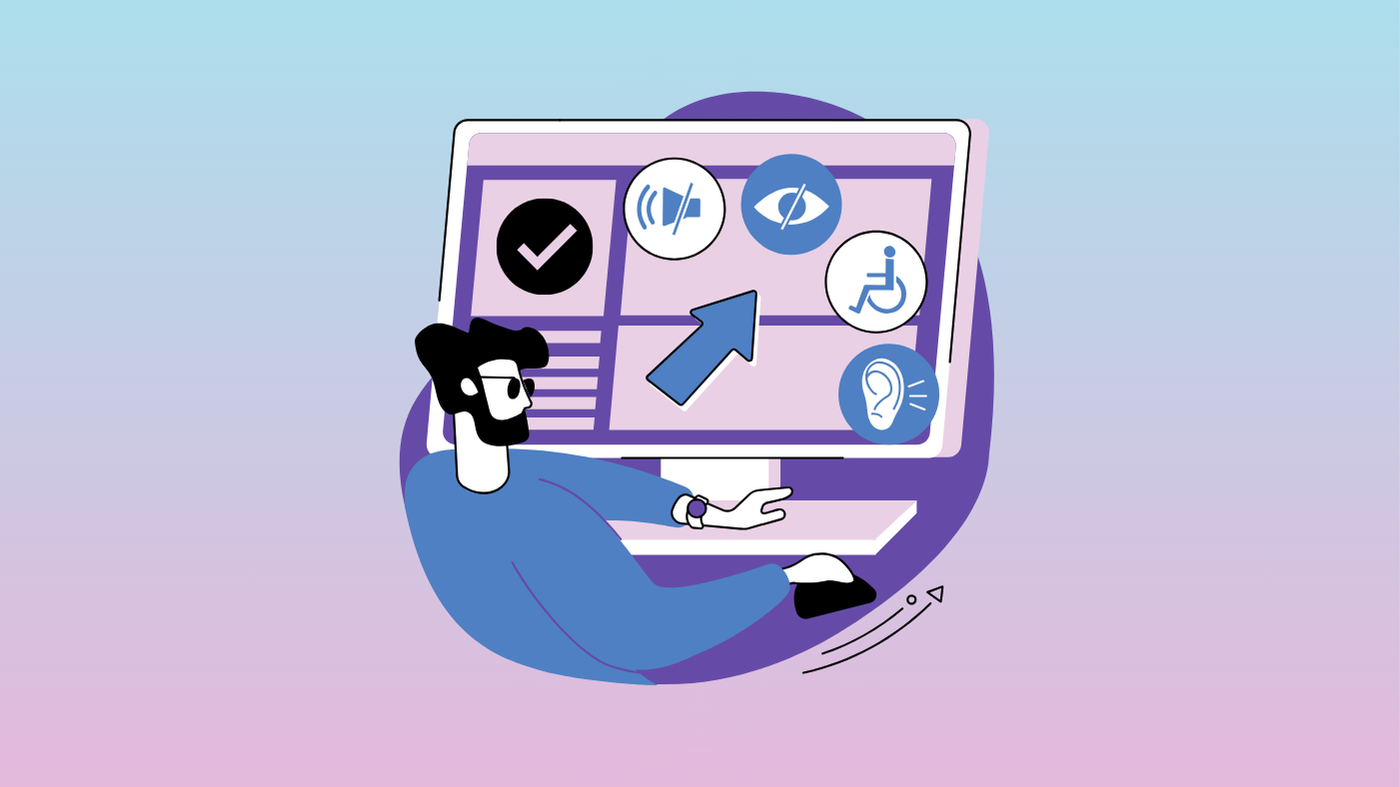Design for everyone: accessibility in web development

Ever tried to navigate a website with your eyes closed? Or how about using just your keyboard? These might sound like peculiar challenges, but for millions of people, this is everyday life.
Welcome to the world of web accessibility, where we design for everyone. Let’s dive in and see how we can make the digital realm a place where everyone feels right at home.
Why accessibility matters
Inclusivity and equality
Imagine being at a party where you can’t hear the music or join the conversation. Sounds isolating, right? That’s how people with disabilities can feel on the web. By embracing accessibility, we’re not just ticking boxes—we’re inviting everyone to the party. Designing with accessibility in mind ensures that our web pages are welcoming to all users, including those with visual impairments, colour blindness, or other disabilities.
Legal stuff
Sure, legal jargon might not be the life of the party, but ignoring it can get you in hot water. In the U.S., the ADA and Section 508 set the stage for web accessibility. Non-compliance can lead to lawsuits and fines. Not exactly the kind of attention you want, right?
Across the pond in the UK, the Equality Act 2010 requires businesses and organisations to make reasonable adjustments to ensure their websites are accessible to people with disabilities. Failure to comply can result in legal action and damage to your reputation. So, whether you’re in the US or the UK, it’s clear that accessibility isn’t optional—it’s essential.
Business brilliance
Search engines like Google appreciate accessible websites and will reward you for it with a higher ranking than that of an inaccessible website. Just something to consider, there!
And just think of all the people you’re opening your doors to. The World Health Organisation estimates that 1.3 billion people, or 16% of the world population, experience significant disability. And according to the CDC, 27% of adults, or roughly one in four, have a disability. That’s a lot of potential users who’d love to interact with your content, if only they could.
The four pillars of accessibility
There are four components to meet the accessibility standards set by the Web Content Accessibility Guidelines (WCAG):
- Perceivable: Your content needs to be seeable, hearable, and readable. This means text alternatives for images (those alt texts aren’t just for fun) and captions for videos. Make sure your website plays nice with assistive technologies. This is essential for users with visual impairments to access the information.
- Operable: If a user can’t navigate your site with a keyboard, you’ve got a problem. All functionalities need to be keyboard-friendly. And give users enough time to read and interact with your content. No rushing allowed. Keyboard navigation should be seamless and intuitive.
- Understandable: Your site’s info and operations should be as clear as a sunny day. Use plain language, predictable navigation, and offer help when users mess up (like error suggestions). This ensures that the user experience is easy to understand and intuitive for all users.
- Robust: Your content needs to work on all sorts of devices and browsers, including assistive technologies. Stick to standard HTML and CSS and regularly test your site to keep it accessible. Your design and development processes should always keep these principles in mind to create a perceivable, operable, understandable, and robust experience for everyone.
Practical tips for making your site accessible
Use semantic HTML
Think of semantic HTML as the unsung hero of web design. Tags like <header>, <nav>, <main>, <section>, and <footer> aren’t just for decoration—they help screen readers navigate your site. Proper heading structures also make your content easier to digest.
Text alternatives
Every image, video, and graphic needs a text alternative. Use alt attributes for images, captions for videos, and detailed descriptions for complex visuals. It’s like having a tour guide for your content.
Keyboard accessibility
Design for the keyboard warriors. Ensure all interactive elements are accessible via keyboard. Use skip navigation links to help users jump straight to the main content. No one likes repetitive detours.
Colour considerations
Don’t rely solely on colour to convey information. Combine colour with text labels for clarity. Choose colour schemes that offer enough contrast between your text and the background. Tools like the WebAIM Colour Contrast Checker are your friends, here.
Test with assistive technologies
Regularly test your website with various assistive tools like screen readers (JAWS, NVDA) and magnifiers. This hands-on approach helps you catch and fix issues. And if you can, get feedback from users with disabilities. They’ll provide insights you can’t get anywhere else.
Error messages
Make sure your error messages are clear and helpful. This can greatly improve the user experience for everyone, especially those who rely on screen readers. Providing suggestions for corrections can make your website more user-friendly.
Accessible Rich Internet Applications
Implement ARIA (Accessible Rich Internet Applications) roles and attributes to enhance accessibility. These can help bridge the gap between dynamic content and assistive technologies.
Summing up…
By following these tips and principles, you’ll be opening your digital doors to everyone.
Incorporating accessibility into your web design and development processes not only complies with the World Wide Web Consortium’s Web Content Accessibility Guidelines (WCAG) but also makes sure that your products and services are accessible to everyone, including users with disabilities. Ultimately, embracing accessibility in your web development can significantly improve the user experience of your site, making your content way more inclusive and easy to understand for all users.
But remember, accessibility is an ongoing journey, not a one-time task. Stay curious, stay proactive, and keep refining your approach. Let’s make the web a welcoming place for all. Because designing for everyone is not just the right thing to do—it’s the smart thing to do.
Interested in working with KOTA?
Drop us a line at
hello@kota.co.uk
We are a Creative Digital Agency based in Clerkenwell London, specialising in Creative Web Design, Web Development, Branding and Digital Marketing.





